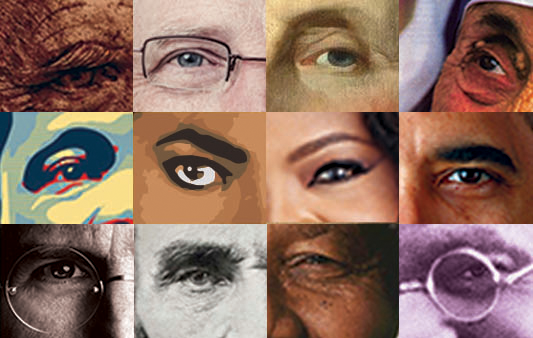Crystal McKenzie, Inc.
220 East 23rd Street, Suite 305
New York, NY 10010
Tel 212-598-4567, Fax 212-598-4566
contact@cminyc.com
cminyc.com

Creating Infinite Singular Universes
by Maria Victoria Recinto (2014)

The last of the Millennial Generation are finally entering the work force and earning money they are eager to spend. By 2015, their annual spending will be approximately $ 2.45-3.39 trillion. Unfortunately, they’re a different kind of consumer, one that is nearly impossible to market to. Millennials – also known as Generation Y- are those born between 1986 and 1994. Eileen Blass of USA Today describes this cohort as high-performance and high-maintenance for their Baby Boomer parents pampered, nurtured, and programmed them to do numerous activities at an early age. Commonly misconceived as lazy and self- entitled, Generation Y’ers are hardworking and financially smart. They are revolutionizing the economy through housing, jobs, investment, and other sectors. They spend about $600 billion annually which make them a prime target for companies.
However unlike generation cohorts prior, it is difficult to target the Millennials. Their constant exposure to marketing and advertising since infancy have exasperated them and made them resent big-name brands. They instead covet unique, authentic, and quality products that would set them apart from the billions of people in the world. Ashley Lutz of Business insider suggests their exhaustion also cajoles this cohort to a simpler marketplace, a reflection of their preference to “understated products over conspicuous consumption.” The technology boom has also shortened the attention span of people today, emphasizing instant gratification and infinite choices that have broadened the market. Robin Lewis perfectly summarizes this generational disposition in The Robin Report, as infinite “universes of one.”
To stand out, here are some tips that will make Millennials care about your brand:
- Research
- Engage
- Personalize
Throw away any preconceived notion of this generation and do your research. As previously stated, their predecessors tend to view them as naïve and lethargic when really the opposite is the case. Figure out what trends appeal to your target consumer. This is probably sounds difficult because this cohort is anti-standardization, but with enough research of how Millennials operate within a market, certain trends will emerge and make marketing more centralized.
Millennial want connections and involvement. It stems from their desire for uniqueness. By stimulating direct contact with your targeted consumer, they feel as if they have direct influence on the brands they buy. Create situations in which the consumer feels they are relevant. No one likes to feel as though they are JUST an insignificant one in billions.
Take the product you would like to sell, and conceptualize a way in which your product will make your target consumer, unique and relevant. Lewis boldly claims brands should consider that “each consumer may very well have his or her own special exclusive brand for every aspect of his or her life.” As insane as it sounds, this is what will ultimately attract Generation Y’ers.
Immersive Experiential Communications
by Maria Victoria Recinto (2014)
21st Century calls for extensive use of the interactive, which is why Immersive Experiential Communications is the "new normal" wave in advertising and marketing communications. The rapidly expanding social media and technology industries have curtailed attention spans and thus call for practices that directly involve consumers.
Immersive Experiential Communications is a method used to ensure consumers experience a brand in the fullest possible way at the touch point. B. Joseph Pine and James H. Gillmore coined the phrase, "experiential economy" in their 1998 Harvard Business Review article, “Experiential Economy.” To summarize, businesses must invest in creating memories for their audiences, the memories thereby becoming the product. Memories and experiences have a higher value due to cultural imprinting; and, like radio isotopes, take a long time to dissipate. More and more of the population are investing in products that deliver tangible experiences.
An army of solutions
Crystal McKenzie, Inc. has recently designed Master Wayfinding and Signage for the architectural components of the National Museum of the U.S. Army facility that included Exterior and interior wayfinding design development, Monumental Entry, vehicular traffic and pedestrian control, donor walls, retail signage, donor pavers, directories, specialty signs to bring the graphic communication into a compelling visitor experience. Working under Skidmore, Owings and Merrill (SOM) as prime, we understand the necessity of the experience in today’s market and have therefore focused on it within our projects. A key factor was integrating museum brand graphic style with museum exhibition graphic style to create an information hierarchy that worked logically across all communication touch points.
Sell the experience
When marketing, sell the benefit experience as your product. The economic paradigm has shifted from valuing material matters to valuing memories; for people now see life is short and capturing those memories is now easier than ever. Additionally, with the increase of marketing bombardment, consumers value their individuality as expressed in their personal style. Selling interactions ensures a unique experience for each person. No two people have the exact same experience. When they are engaged, it becomes memorable, therefore, it is imperative that the main objective of marketing communicators in partnership with their clients is to provide their audiences with immersive experiences in every aspect of their business.
Inspiration:
The Foundation of Leadership.
by Maria Victoria Recinto (2014)

3 Qualities for Leadership
Leaders are the driving force in change and productivity. However radical or innovative their ideas may be, they are nothing without their followers. In order to gain followers and respect, a leader must primarily inspire.It is not enough to be brilliant anymore. There are many bright minds in the world, but what distinguishes one from another are their leadership qualities and their ability to communicate effectively. Jeff Weiner, CEO of popular social networking site LinkedIn, distinguishes between leaders and managers:
For me, leadership is the ability to inspire others to achieve shared objectives… For me, that’s the differences between leaders and managers. Managers tell people what to do, leaders inspire them to do it.
Inspiration stems from passion. Based on Weiner’s definition, a leader will reap better results than one who simply mandates. Intelligence is required, although more important are qualities of character such as passion, humility, and charisma that will make yourself relatable. Humility and passion are the intrinsic qualities that serve as the basis for leadership while charisma will effectively communicate your cause. And while intellectual and practical intelligence is absolutely necessary for those who wish to cultivate productivity, what is it without support? Stagnant.
A Quaily Revered
There is much importance in being confident, although your ego should not overshadow your intentions. Humility is a quality revered, but rarely executed properly. Your employees will tolerate arrogance but not yield their full potential. A 2013 qualitative study and analysis conducted by Bradley Owens, Michael Johnson, and Terence Mitchell titled “Expressed Humility in Organizations: Implications for Performance, Teams, and Leadership” has suggested positive relationships in leader-expressed humility to employee engagement, job satisfaction, and voluntary employment turnover. This study implies the importance of humility within a working environment. Humility will ultimately garner respect and serve as the basis of your leadership platform.
Inspired by Example
While humility is what gains respect, passion is what will make people pay attention to what you have to say. The public wants to know why they should support you, as should you. Be passionate about what it is you do, for if you cannot explain why you care, how can you expect others to? Once others perceive the passion you charismatically express, they too will share your goal. Simon Sinek, a speaker at TEDx Puget Sound says “People don’t buy what you do, they buy why you do it.” That being said, it is important to be passionate about your causes, because that is what will gain followers. Passion is the root of inspiration.
Turn It On
In order to communicate your passions effectively, a leader must possess charisma. Charisma is actually an umbrella term to describe the accumulation of various qualities. Dr. Ronald Riggio of Psychology Today attributes emotional expressiveness, emotional control, social expressiveness, and social sensitivity, and social control as the 6 building blocks of charisma. It is a quality all great leaders possess is the social skill necessary to communicate with others. It is this connection between you and your audience that will make them care. Charisma is the means by which you inspire.
The three qualities mentioned above are all critical in leadership and are intended to motivate others to follow. Humility is the basis of respect- without it, people will not consider giving you their attention. Passion is the reason why you pursue what you pursue, and it will make others pursue it as well. Charisma is how you effectively communicate your passions. The three combined are the foundations of leadership, for they do not demand—they inspire.

